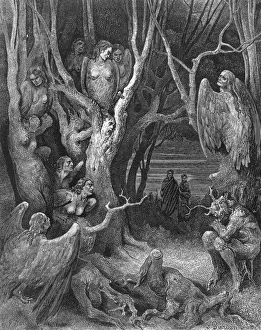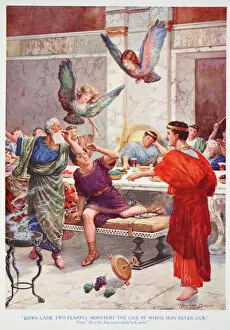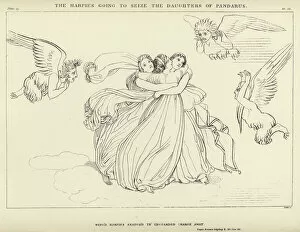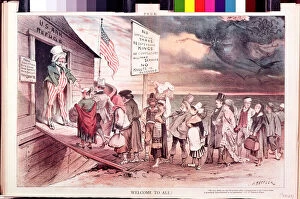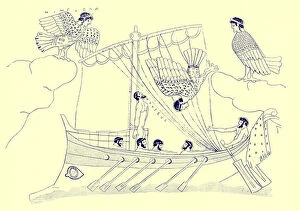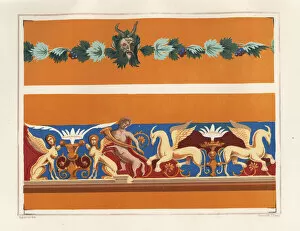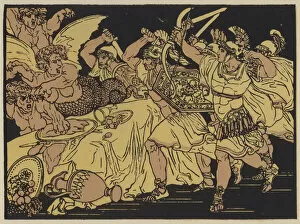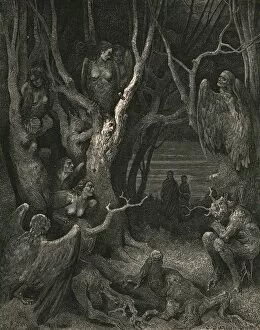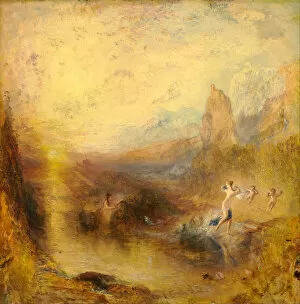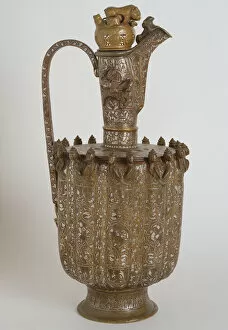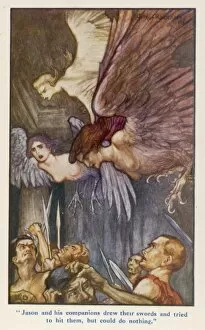Harpies Collection
"The Harpies: Mythical Creatures of Infernal Descent and Haunting Beauty" In the depths of Dante's Inferno, amidst the tormented souls and despairing cries
All Professionally Made to Order for Quick Shipping
"The Harpies: Mythical Creatures of Infernal Descent and Haunting Beauty" In the depths of Dante's Inferno, amidst the tormented souls and despairing cries, down came two fearful monsters, the likes of whom man had never seen. Their presence was as ominous as their appearance, striking fear into even the bravest hearts. A vivid colour lithograph captures this terrifying encounter, forever etching it in our minds. But who were these harpies? Legends speak of them as winged creatures with female faces and bird-like bodies. They were known to be relentless tormentors, particularly targeting those who had committed suicide - a fate deemed unforgivable in ancient times. The engraving depicting "The Harpies going to seize the Daughters of Pandarus" showcases their insidious nature. Yet not all depictions paint them solely as malevolent beings. In an illustration from Greek Vase Paintings by J. E Harrison and D. S MacColl published in 1894 (digitally enhanced image), we see Ulysses confronting the sirens alongside harpies. Here they serve as a cautionary symbol against temptation and danger. Their influence extends beyond literature and art; they have found their place on furniture too. A walnut table with drawers on an oak frame adorned with Tuscan columns from 1550-1600 features decorative ornaments showcasing centaurs and harpies within its intricate design—a testament to their enduring allure. Even American magazine Puck welcomed all readers with open arms through an illustration aptly titled "Welcome to All. " It showcased these mythical creatures alongside other fantastical beings—an invitation into a world where imagination knows no bounds. Phineus also fell victim to their wrath in another engraving portraying his ill-fated encounter with the harpies. These avian horrors swooped down upon him relentlessly, stealing his food before he could satiate his hunger—a punishment for revealing divine secrets.

